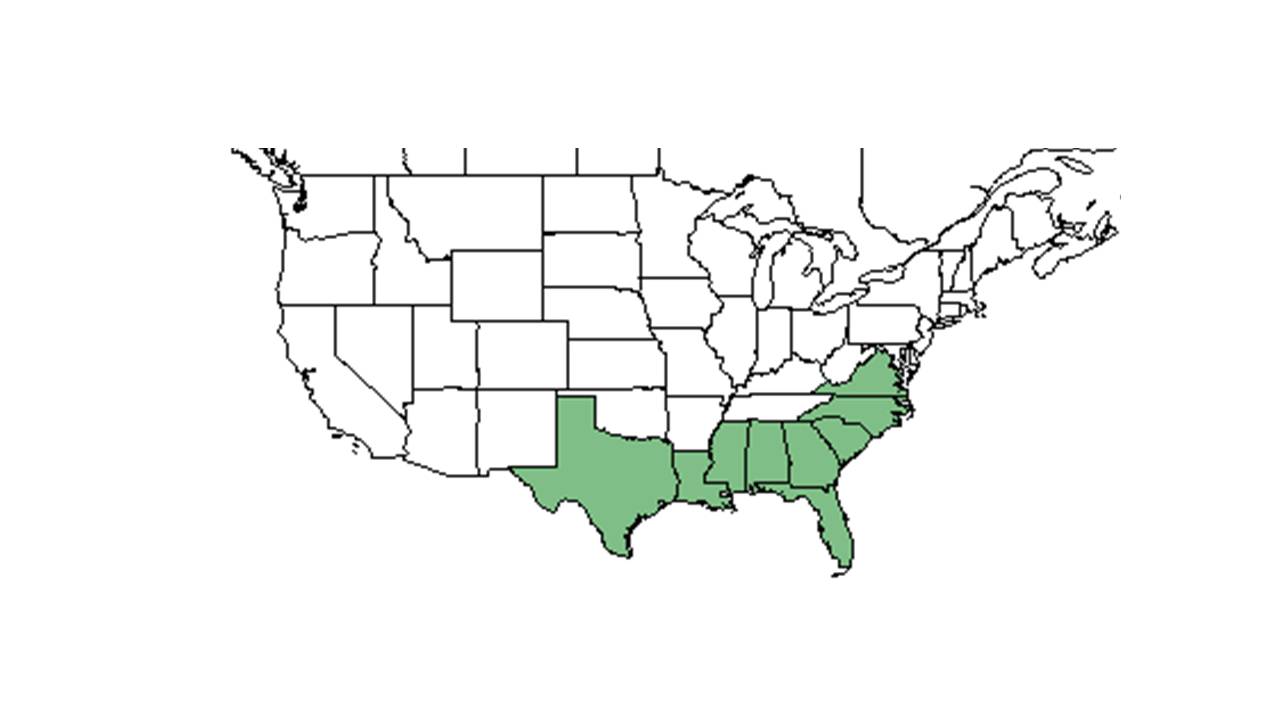Difference between revisions of "Hypericum setosum"
Ruthstetler (talk | contribs) |
Ruthstetler (talk | contribs) |
||
| Line 26: | Line 26: | ||
==Ecology== | ==Ecology== | ||
===Habitat=== <!--Natural communities, human disturbed habitats, topography, hydrology, soils, light, fire regime requirements for removal of competition, etc.--> | ===Habitat=== <!--Natural communities, human disturbed habitats, topography, hydrology, soils, light, fire regime requirements for removal of competition, etc.--> | ||
| + | ''H. setosum'' occurs in moist or dry loamy sand, and seems to prefer open light conditions (FSU Herbarium). It can be found in pinewoods, bordering swampy depressions, and in open wiregrass flats in longleaf pinelands (FSU Herbarium). On the other hand, this species also appears in disturbed areas, including ditches and power line corridors (FSU Herbarium). | ||
| + | |||
===Phenology=== <!--Timing off flowering, fruiting, seed dispersal, and environmental triggers. Cite PanFlora website if appropriate: http://www.gilnelson.com/PanFlora/ --> | ===Phenology=== <!--Timing off flowering, fruiting, seed dispersal, and environmental triggers. Cite PanFlora website if appropriate: http://www.gilnelson.com/PanFlora/ --> | ||
Flowering has been observed in August and September, while fruiting has been observed in September and October (FSU Herbarium). | Flowering has been observed in August and September, while fruiting has been observed in September and October (FSU Herbarium). | ||
Revision as of 18:24, 20 July 2015
| Hypericum setosum | |
|---|---|

| |
| Scientific classification | |
| Kingdom: | Plantae |
| Division: | Magnoliophyta - Flowering plants |
| Class: | Magnoliopsida – Dicotyledons |
| Order: | Theales |
| Family: | Clusiaceae ⁄ Guttiferae |
| Genus: | Hypericum |
| Species: | H. setosum |
| Binomial name | |
| Hypericum setosum L. | |

| |
| Natural range of Hypericum setosum from USDA NRCS Plants Database. | |
Contents
Description
Common Name: hairy St. Johnswort
Hypericum setosum is a perennial herbaceous species.
Distribution
Ecology
Habitat
H. setosum occurs in moist or dry loamy sand, and seems to prefer open light conditions (FSU Herbarium). It can be found in pinewoods, bordering swampy depressions, and in open wiregrass flats in longleaf pinelands (FSU Herbarium). On the other hand, this species also appears in disturbed areas, including ditches and power line corridors (FSU Herbarium).
Phenology
Flowering has been observed in August and September, while fruiting has been observed in September and October (FSU Herbarium).
Seed dispersal
Seed bank and germination
Several short-lived perennial forbs also have a seed bank persistent for at least several years.[1]
Fire ecology
This species has been found in habitat that is often maintained by fire (FSU Herbarium).
Pollination
Use by animals
Diseases and parasites
Conservation and Management
Cultivation and restoration
Photo Gallery
References and notes
Florida State University Robert K. Godfrey Herbarium database. URL: http://herbarium.bio.fsu.edu. Last accessed: June 2014.
Collectors: Loran C. Anderson, Wilson Baker, R. A. Norris, and M. Davis.
States and Counties: Florida: Gadsden, Liberty, and Wakulla. Georgia: Grady and Thomas.
- ↑ Platt, W. J., S. M. Carr, et al. (2006). "Pine savanna overstorey influences on ground-cover biodiversity." Applied Vegetation Science 9: 37-50.